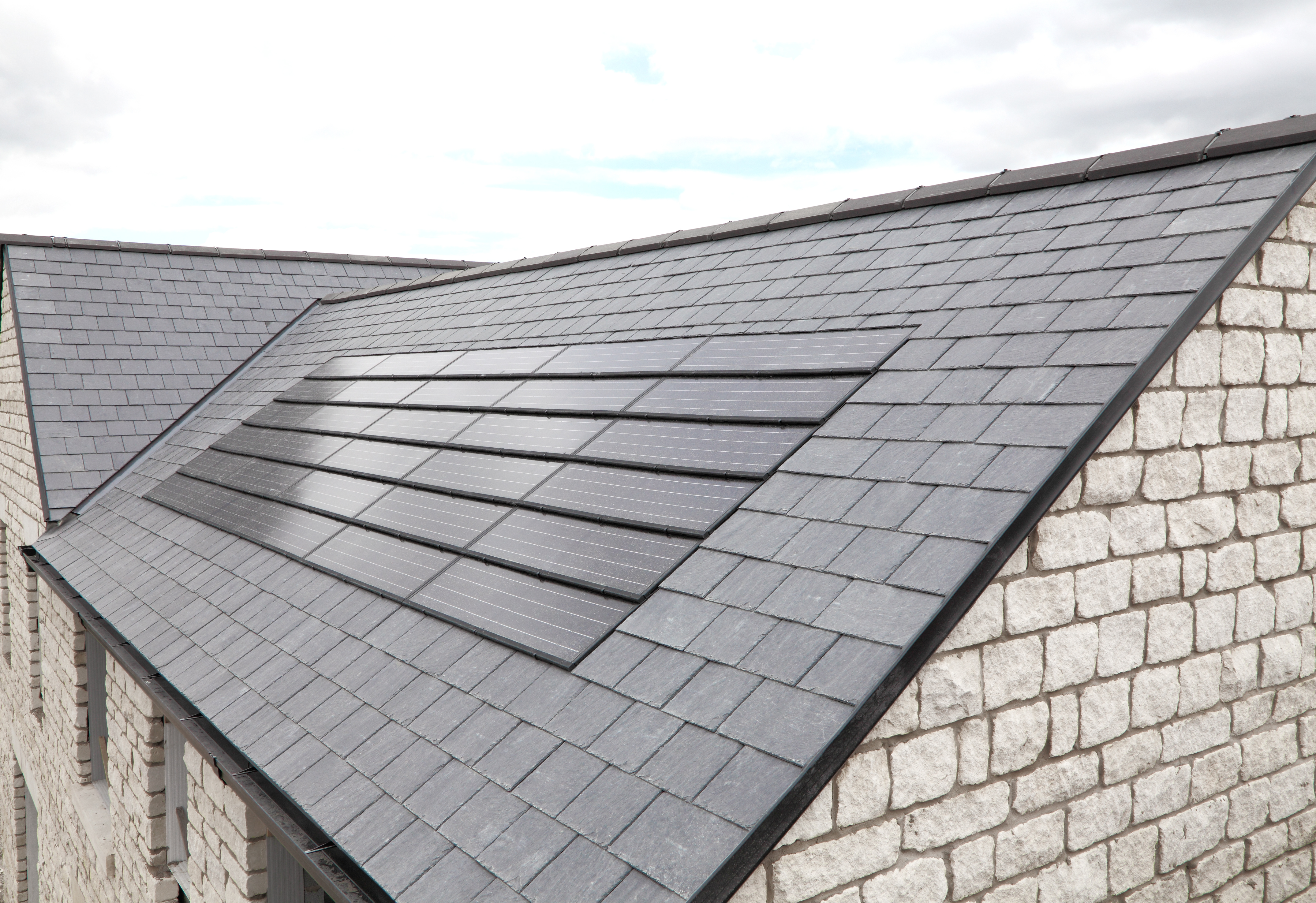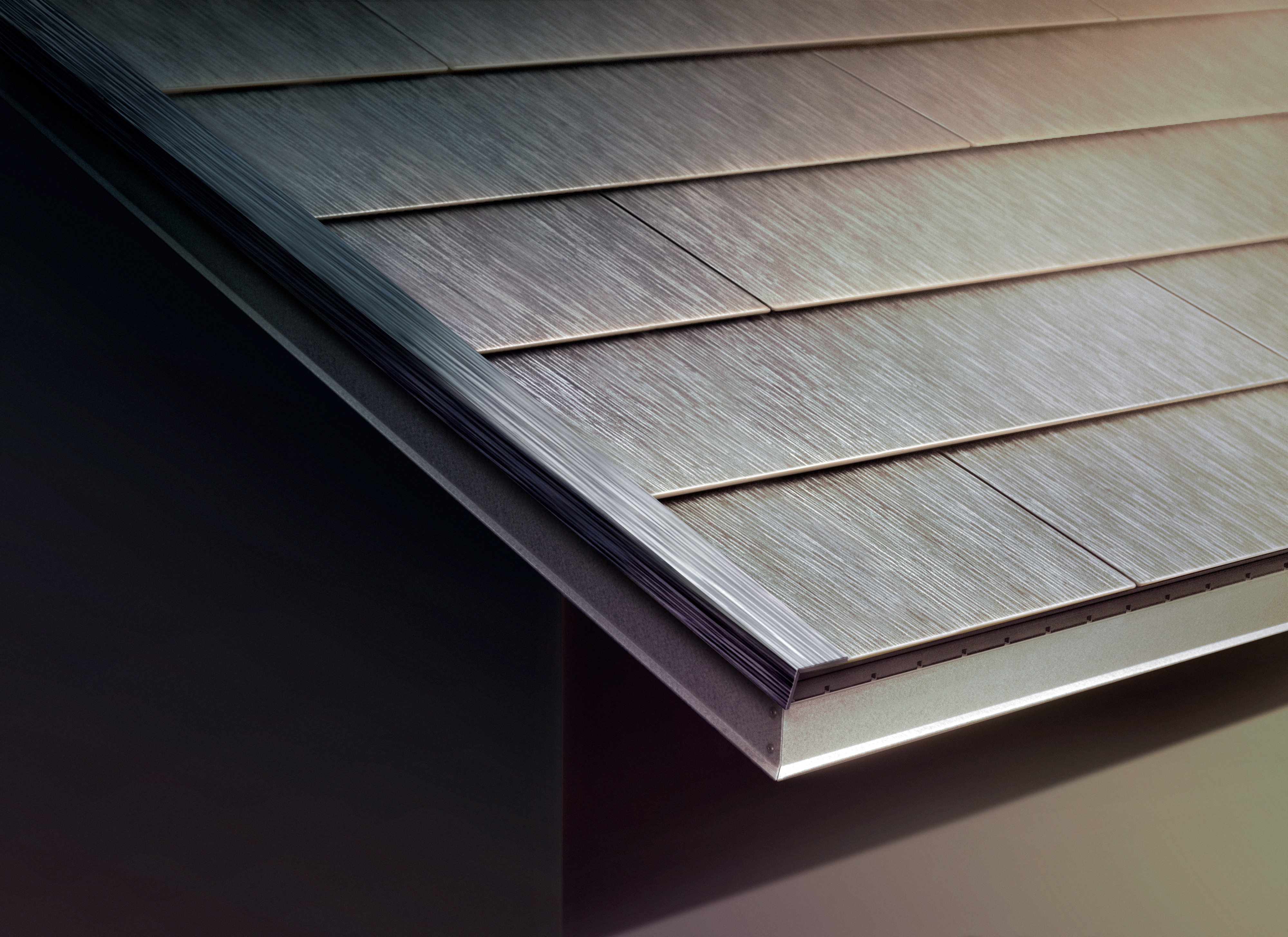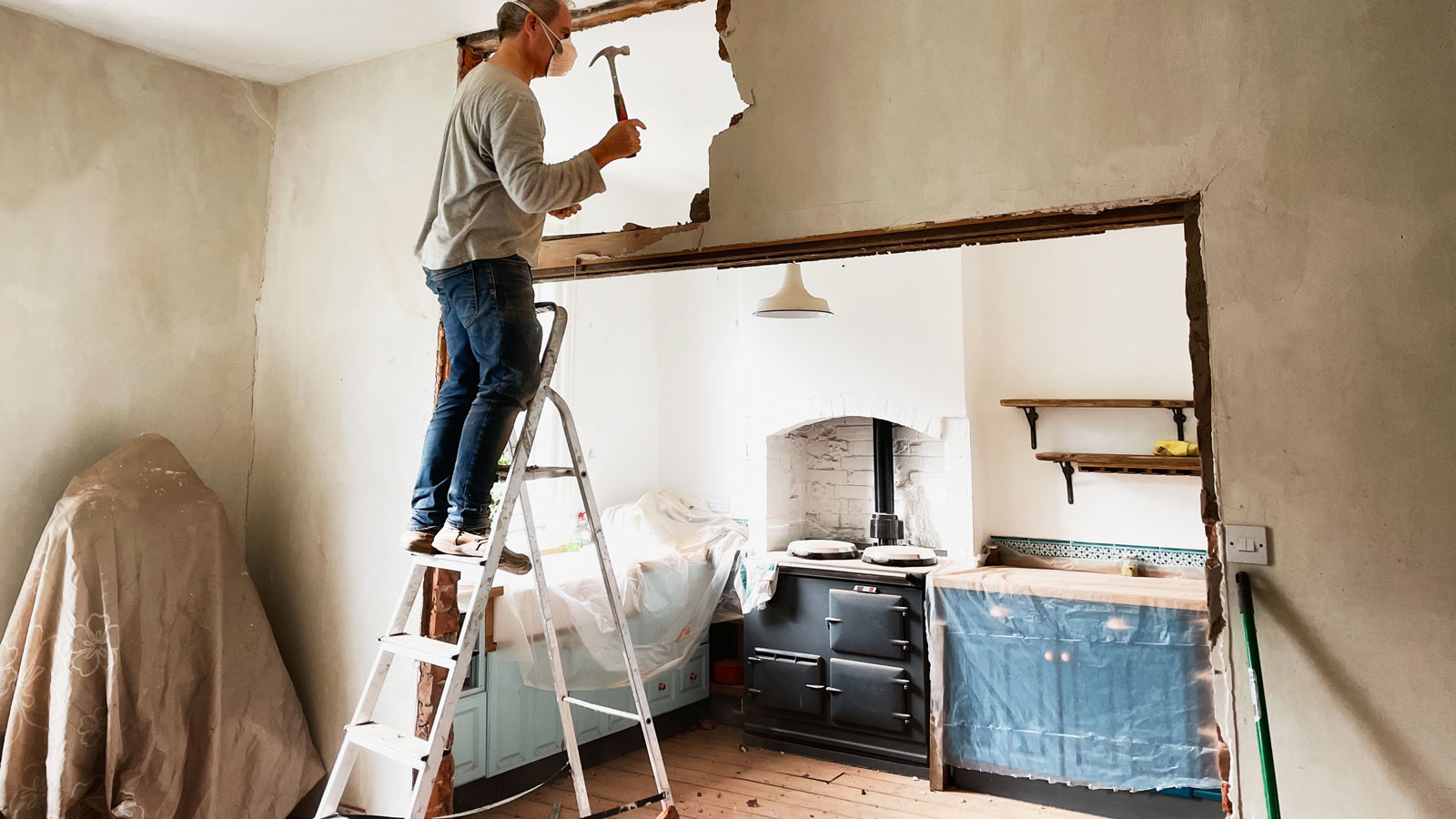Solar roof tiles explained: The costs, installation and benefits
Solar roof tiles are an elegant way to introduce green tech to homes, particularly those in conservation areas. Discover the installation costs, plus the pros and cons

Solar roof tiles are a cutting-edge renewable energy technology which offers the eco credentials of solar panels with an elegant and subtle aesthetic design.
This solution might be ideal for those who are interested in generating their own energy, but don't love to look of large solar panels affixed to the roof. Solar roof tiles are also more accepted in conservation areas where a certain style must be maintained.
Take a look below as we delve into the pros, cons and costs of solar roof tiles.
What are solar roof tiles?
A solar roof looks more or less like a normal roof except the individual roof tiles are made of solar PV (photovoltaic) material, either conventional monocrystalline solar cells or thin-film PV. These roof tiles are also sometimes called ‘shingles’ or ‘solar slates’.
As with installing solar panels, while thin-film solar PV is more flexible and less expensive, it is also less efficient than monocrystalline solar PV. Some experts believe this is likely to change in time, as thin-film has a higher theoretical efficiency than monocrystalline silicon and also has a better temperature coefficient, which means they have a greater resiliency to high temperatures.
They are a fairly new technology, when compared to conventional solar PV panels that are bolted on to the roof, particularly in the UK, although there are at least three companies in the country offering them now. This is in addition to Tesla making its solar roof available for purchase online, although physical deliveries are not scheduled in the UK until 2023.
Solar tiles are different to integrated solar panels in that the latter are still solar panels but are installed flush with the roof surface, that is to say embedded into the roof itself. Solar tiles replace and resemble to surrounding roof slates. However, solar tiles work in the same way that conventional solar panels do.
Bring your dream home to life with expert advice, how to guides and design inspiration. Sign up for our newsletter and get two free tickets to a Homebuilding & Renovating Show near you.
Are solar roof tiles worth it?
Solar roof tiles are undoubtedly worth considering where a property is located in a conservation area where a conventional solar panel array would be too disruptive and may even fall foul of local planning regulations without planning permission for solar panels.
They would also be worth considering if a roof needs total replacement, in which solar tiles could be substituted for conventional roof tiles. So, yes, solar roofs are worth considering, but probably only under a select set of circumstances.

What are the benefits of solar tiles?
There are a number of benefits:
- Solar tiles can be adapted to different styles of roof. This is a considerable advantage to homeowners living in heritage or conservation areas where planning laws or building regulations forbid changes to the roof structure or buildings.
- Solar roofs can also be much more aesthetically pleasing and this offers a second advantage to those living in conservation areas, as they look like a conventional roof and so are not as visually disruptive as conventional solar PV.
- Solar roofs are eligible for the same kind of government solar panel grants that solar panels receives, such as the Smart Export Guarantee (which pays homeowners for electricity exported back to the Grid) and Energy Company Obligation Scheme – ECO4.
- A house with a roof-mounted solar panel array tends to increase the value of the property. This is probably even more true of solar roofs, given that they are aesthetically pleasing.
- Increased durability — although solar panels are solidly bolted on to the roof, extreme weather conditions could probably still damage them. However, solar tiles have increased durability as they are integrated into the roof and they could also therefore protect the roof section they have been installed on.
What are the disadvantages of solar tiles?
There are a number of pros and cons to solar tiles, and your decision as whether to specify them or not will inevitably involve weighing up both and assessing whether they are suitable for your home. The main disadvantages of solar tiles include:
- Solar tiles are not widely available in the UK yet, although there are at least three companies offering and Tesla offers them for purchase online with deliveries scheduled for 2023.
- Given that solar tiles are a fairly new technology, they are still very expensive as compared to the cost of solar panels which are conventionally roof-mounted. They can easily cost twice as much.
- Solar tiles take longer to install than solar panels, with installation time being approximately one week.
- It is not possible to integrate them into an existing roof, so they usually have to be installed in the roof of a new build or where the roof is being completely replaced for some reason.
- Generally, solar tiles are less efficient than solar panels, with an efficiency of 10-20% compared to 16-22% for most solar panels.
- A roof has to have a perfect pitch and angle in order to be suitable for solar tiles installation, whereas solar panels are much easier to install on ‘difficult’ roofs.
- Solar thermal is not yet available in the form of solar panels.
Are solar roof tiles more expensive?
Solar roof tiles are considerably more expensive than solar panels. A 4 kilowatt solar roof will cost between £12,000 and £16,000, compared to around £6,500 to £8,000 for a 4 kilowatt solar panel system, so at least half the price of a solar roof.
Bear in mind, however, that solar slates and tiles take the place of standard roof coverings and will therefore help to reduce the material cost of a new roof (although this saving is likely to be in the hundreds, not thousands).
For those considering a solar powered house this increased cost could be completely prohibitive.
How long does a solar roof last?
Tesla says that its solar roof will last for at least 25 years and it comes with three warranties — a product warranty, a weathering warranty and a module warranty. In general, this is roughly the same longevity as solar panels, but this will vary for both technologies depending on the manufacturer and the installation.

Which type of roof is best for solar tiles?
Solar shingles, like any other tiles, are not suitable for flat roofs as inclement weather can drive moisture beneath the tiles and they are more easily ripped from the roof by strong winds. However, solar panels can be suitable for flat roofs, usually on mounts if the roof is sufficiently strong or reinforced.
As such, solar tiles are best suited to pitched roofs. For solar tile products offered in the UK, such as GB Sol's solar slates, there is generally a minimum roof pitch of 22.5° required for installation.
So, which is better: Solar roof or solar panels?
Solar roofs or tiles and solar panel arrays both have distinct advantages and disadvantages. It may be that a solar roof is the better choice for higher income homeowners who can afford the higher costs associated with solar roofs, particularly if the property is in a conservation area or those who don't like visible solar panel ideas.
Given that solar tiles cannot be installed on existing roofs, the installation of a solar roof may well be considered if the project forms part of an overall property renovation where the roof is being completely replaced.
However, for others, a solar panel array, rather than a solar roof, may well be the better option across a range of parameters, particularly cost and efficiency. A lower upfront cost and better efficiency will both be factors benefitting homeowners on a budgets, both for initial outlay and long-term generation.

Robin is a freelance journalist based in the South West of England, UK. He specialises in environmental issues, climate change and renewable energy, with other interests in transport and green motoring. He is a regular daily correspondent for a renewable energy website, writing news articles and interview pieces on all the main clean energy technologies. He has also written widely for numerous magazines on these topics, as well as writing white papers and web content.
